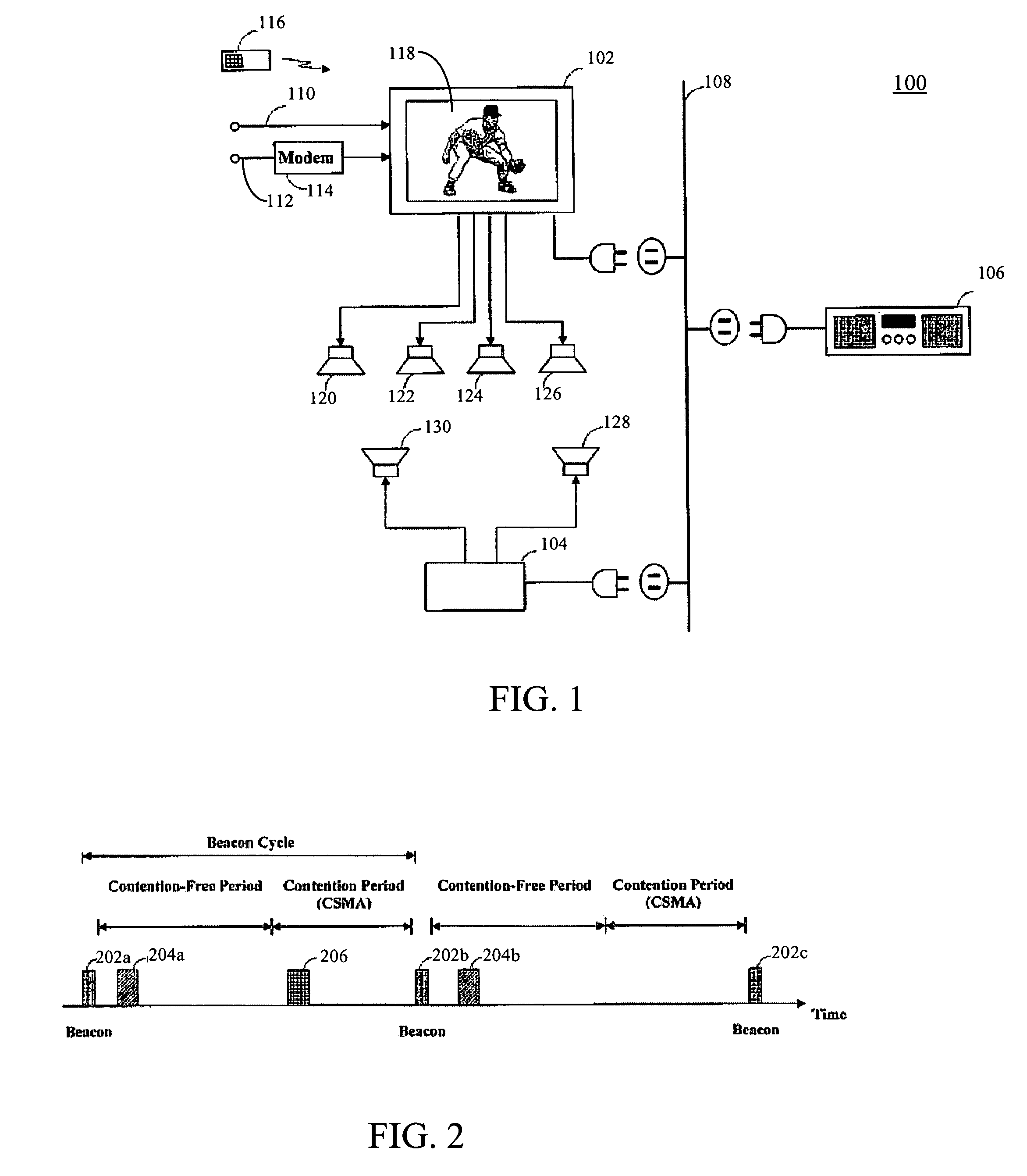Synchronized audio/video decoding for network devices
a network device and audio/video technology, applied in the direction of synchronisation signal speed/phase control, selective content distribution, electrical apparatus, etc., can solve the problem that the echo effect detracts from the user's enjoyment of music being played in surround-sound audio decoding systems, network clients have no synchronization mechanism, and the delay between them gets gradually larger
- Summary
- Abstract
- Description
- Claims
- Application Information
AI Technical Summary
Benefits of technology
Problems solved by technology
Method used
Image
Examples
Embodiment Construction
[0023]The following description is not to be taken in a limiting sense, but is made merely for the purpose of describing the general principles of exemplary embodiments. The scope of the invention should be determined with reference to the claims.
[0024]As disclosed herein, numerous embodiments allow decoders within a network to decode data in synchrony with other decoders within the network. Accordingly, numerous embodiments enable substantially synchronous operation by adjusting system time clocks (STCs) of decoders (i.e., local STCs) based upon timestamps output by a network server. Other embodiments enable substantially synchronous operation by adjusting the buffer occupancy of the decoders. By adjusting the STC and / or the buffer occupancy of decoders within the network, the decoders can decode encoded data substantially synchronously. When methods disclosed herein are performed for each decoder within the network, the decoders are substantially synchronized and a decoding delay ...
PUM
 Login to View More
Login to View More Abstract
Description
Claims
Application Information
 Login to View More
Login to View More - R&D
- Intellectual Property
- Life Sciences
- Materials
- Tech Scout
- Unparalleled Data Quality
- Higher Quality Content
- 60% Fewer Hallucinations
Browse by: Latest US Patents, China's latest patents, Technical Efficacy Thesaurus, Application Domain, Technology Topic, Popular Technical Reports.
© 2025 PatSnap. All rights reserved.Legal|Privacy policy|Modern Slavery Act Transparency Statement|Sitemap|About US| Contact US: help@patsnap.com



